Top-9 historical buildings of Astana

The Merchant House - Museum of Saken Seifullin
Astana's oldest building built in 1846 is located at Auezov Street, 20. Today it is the Museum named after Saken Seifullin, a writer, a national activist and one of the founders of modern Kazakh literature. 
171 years ago one of the representatives of the Akmolinsk merchant class built the single-storey building with the basement to use it as an office for goods purchased accounting. In ХХ the building served as kindergarten "Zor'ka". 30 years later on February 20, 1988 after the posthumous rehabilitation of Saken Seifullin by the Decree of the Council of Ministers of the Kazakh USSR the building became the museum.
The House of Doctor F.I. Blagoveshchenskiy - administration of Saken Seifullin Museum
Right next to the Saken Seifullin Museum is the building where Doctor F.I. Blagoveshchenskiy lived and worked in the beginning of the XX century. 
During the Soviet period the building accommodated the central regional accounting school. Today in this building is the administration of the Saken Seifullin Museum. The House is the memorial of wooden architecture and reflects the eclectic style typical of the end of the XIX - early XX centuries.
Muslim School - the Administration of Culture, Archive and Documentation of Astana at Otyrar 1/3
In the beginning of the XX century in the place where it is the modern street Otyrar now the first Muslim school of Akmolisk was located. From 1907 Kyrgyz-Tatar elementary school consisting of 27 pupils functioned at the medrese. The house No 29 was girls' section, and boys were in the No 31. In 1912 poet, writer, and activist Saken Seifullin worked there as a teacher.
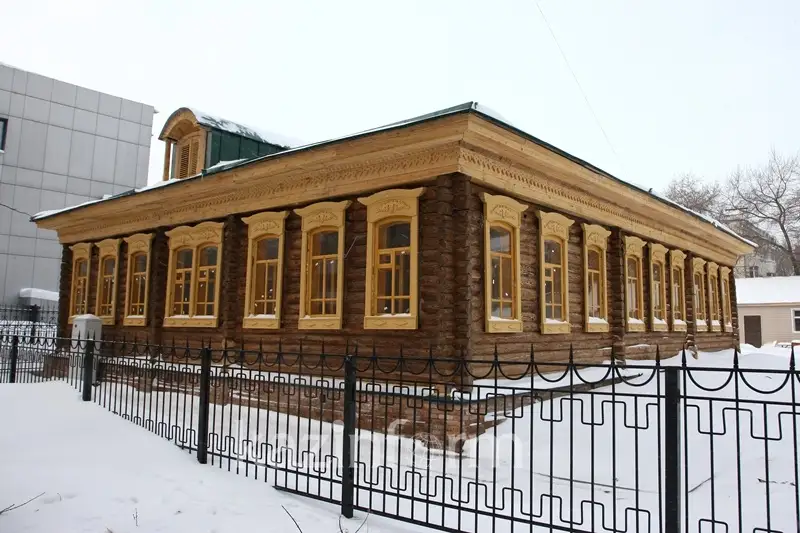
Later the building was used as set dressing department of the Kazakh Musical and Drama Theatre named after K.Kuanyshbayev which was founded in 1991. At present the building is being restored for the Administration of Culture, Archive and Documentation of Astana.
Konstantino-Yeleninskaya Church
The church was built during 1854-1856, and up to now has been named Konstantino-Yeleninskaya. It is located at Respublika ave. 12-B
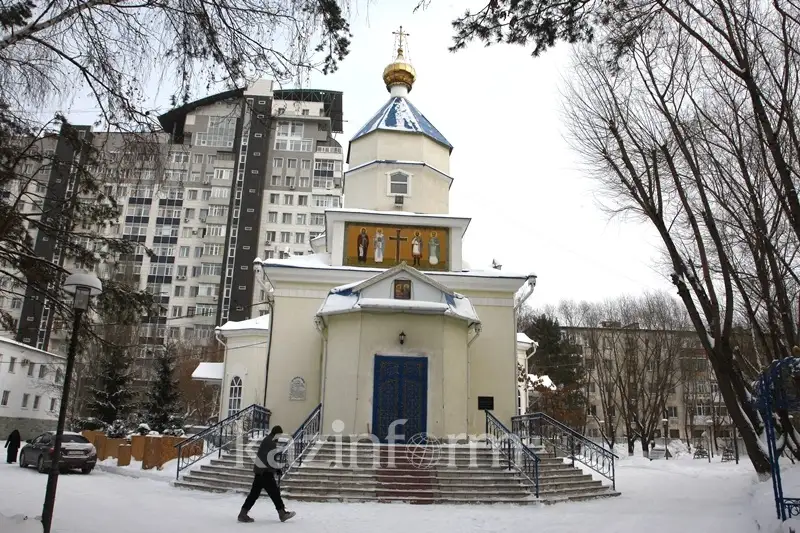
On September 12, 1849 Priest of ambulatory Akmolinskaya Church Mikhail Nikolskiy asked for authorization from the chief of the border administration to build the church in early spring 1850. On July 8, 1856 cathedral archpriest Ioann (John) Toropov consecrated the church in the name of the saints Konstantin and Yelena, Equal-to-the-Apostles. The construction finished in summer 1858.
By the Decree as of April 27, 1893 the Tobolsk ecclesiastical consistory allowed, upon the requirement of Akmolinsk treasury, to relocate the
Konstantino-Yeleninskaya Church to Akmolinsk. The relocation process started on May 14 1900 and finished in early 1902. In 1938 the Church was closed. All crosses and bells were removed and the bell tower disassembled.
In 1940 the building was handed over to the Museum of Local History. During the Great Patriotic War in 1941-1942 the building accommodated the battalion of the 29th rifle division which was formed in Akmolinsk.
In 1942 the religious population requested to resume worship service in the Konstantino-Yeleninskaya Church in Akmolinsk.
The Trade House of Merchant Matvey Kubrin - supermarket "Astana"
One of most frequently visited building on Kenessary Street, 37 was built 112 years ago as a trade house of the partnership "Matvey Kubrin with Sons and Co" during 1905-1907. After the revolution in different years it was Central City Library, Central Press, District Economic Department. Afterwards the building functioned as fabric store, and later as food and book store. Later it became the central department store.
In 1944 fire damaged all wooden structures. Six years later the executive committee made a decision to restore the building by attaching a small section to the porch area designed in the same architectural style. It became a bread store. For almost half a century it had been a delly and food store "Raduga" (from Russian "rainbow"). Nowadays it is a department store "Astana" offering a wide range of goods and food products.
The House of Merchant Vassiliy Kubrin - Embassy of Ukraine
On Auezov street of the present time Astana is the building which had belonged to merchant Kubrin Vassiliy. It was the house where he lived. It was built in 1910. The idea of the single-storey house with the high pedestal belonged to a Moscow architect and was built in the eclectic style of the early XX century. The mansion represented a building consisting of one and a half storeys, a wing with a basement and conduit which was connecting the wing with a store (the conduit was later immured), a stable with cartwrights and masonry barn. In the yard was the garden set up in the English style. Vassiliy Kubrin used to plant trees which still decorate the yard.

In the mansion there was the club of workers and peasants, library and district and city executive committee. In October 1920 it was official renamed into "First House of Soviets". From February 24, 1921 it was the headquarters of the revolution threes and later Joint State Political Directorate, NKVD [People's Commissariat for Internal Affairs] and police. In mid ХХ the building belonged to the Local Education Authority and the House of Pioneers. In 1980-s of it was Tselinograd regional Museum of Local History. From 2000 the building has been used by the Embassy of Ukraine in Kazakhstan.
The House of Merchant P.G. Moisseyev - Central Clinical Hospital of the Great Patriotic War
Almost during the same years a few meters away from the trade house of Matvey Kubrin and the residential house of Vassiliy Kubrin, at Bukeikhan 40, is another beautiful old building of Astana. It is a two-storey mansion which belonged to merchant Moisseyev who lived in the same years as the Kubrins.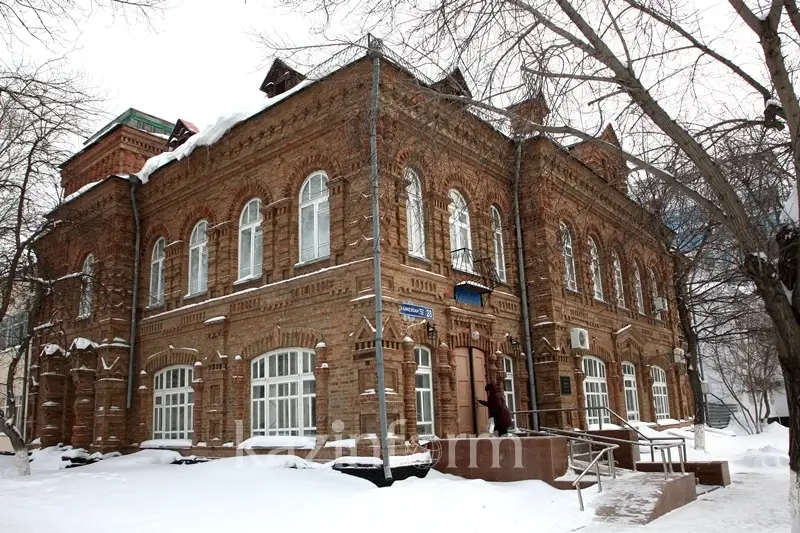
Moisseyev was one of those merchants who came to Akmolinsk which, at that time, was turning into the center of exuberant commerce, from Russia and Western Europe.
The construction of the brick building with a basement was started in 1914 and finished in 1918. The merchant did not have a chance to live in his mansion because from 1919 it was occupied by the representatives of the Soviet power. At present the building accommodates the Central Clinical Hospital for the veterans of the Great Patriotic War.
Mariyeenskaya Gymnasium - City Court
At the present time Omarov Street, 57, is the building of city court and Astana courts administrator which was built in the beginning of the XX century as Mariyeenskaya Gymnasium.
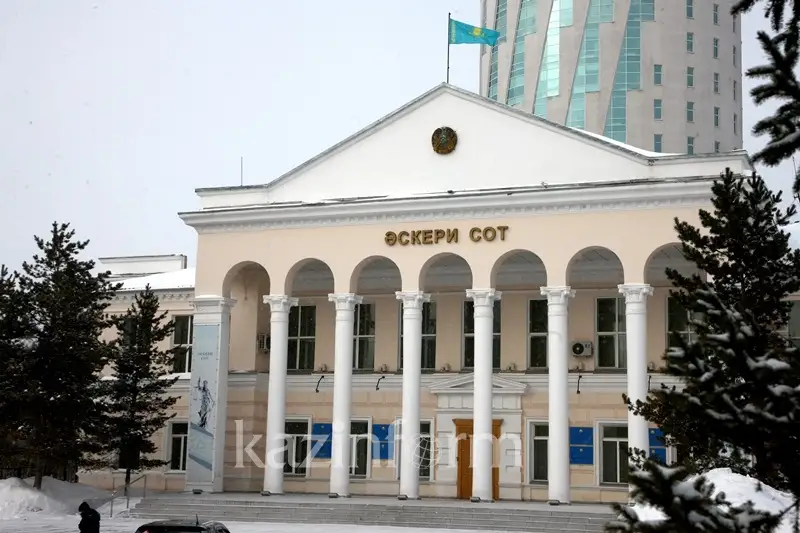
In 1919 here communist squads and military and party troops were formed on the basis of the decree of the Central Committee of the Russian communist party of the Bolsheviks as of April 17, 1919. In different years the building was the regional committee of the communist party of Kazakhstan, city hospital and the Supreme Court of Kazakhstan.
Gymnasium - Maxim Gorky Theatre
The building of the Academic Russian Drama Theatre named after Maxim Gorky at Zheltoksan 13, was initially meant to be a gymnasium. In 1899 the building was given to the Theatre when the Akmolisnk city "uprava" [obsolete of "administration'] and merchant Stepan Kubrin allocated 100 rubles for its purchase.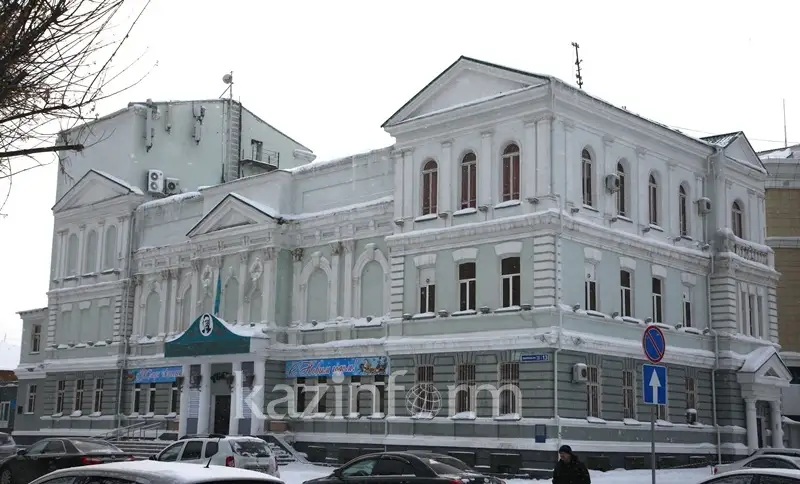
On September 10, 1955 the Ministry of Culture of the KazSSR issued a decree about opening of Akmola regional drama theatre. In 1959 the theatre was named after Maxim Gorky.